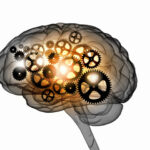According to the Schizophrenia and Related Disorders Alliance of America, or SARDAA, it is estimated that approximately 3.5 million people in the United States are diagnosed with schizophrenia. This disorder is at least partially genetic, and three-quarters of people with schizophrenia develop the illness somewhere around 16 and 25 years of age. SARDAA notes that there are also 5 key characteristics of psychotic disorders like Schizophrenia: delusions, hallucinations, disorganized speech, disorganized or catatonic behavior, and negative symptoms.
According to the National Institute of Mental Health, or NIMH, “Negative symptoms are associated with disruptions to normal emotions and behaviors. These symptoms are harder to recognize as part of the disorder and can be mistaken for depression or other conditions.” These include what NIMH calls the “flat affect” which is defined as being when a person’s face does not move when they speak or when they speak in a dull or monotonous voice. Other symptoms include when an individual is experiencing a lack of pleasure in their day-to-day lives, or they demonstrate an inability to begin or sustain planned activities, or some individuals may speak very little, even when forced to interact.
Can Computers Predict Schizophrenia?
The variety of symptoms which can sometimes be misidentified as other disorders make certain illnesses like Schizophrenia challenging to properly diagnose and even harder to predict in certain individuals who may actually be more predisposed to developing them. However, a recent discovery of an algorithm may actually make this process not only easier and more efficient, but also much more accurate. Mental health professionals have long noticed the disjointedness which may occur in the speech and speech patterns of individuals with Schizophrenia, usually manifested when one thought being expressed is not well connected to the next. Thus, analyzing speech through psychopathology isn’t a new area of study. In the 1990’s, many guidelines were developed to help doctors predict psychosis from listening to the patient’s dialogue. Many doctors can do so with remarkable accuracy, around 80%. But with computers, the accuracy can be as high as 100. According to a new study published in Nature, computer algorithms were able to perfectly predict which at-risk youth would go on to develop Schizophrenia over a 2.5 year period.
This was achieved by analyzing the spoken dialogues of the study’s subjects. From this data, the algorithms measured the coherent flow from one sentence to the next. If a single, jarring disruption was present, it was a sign that a psychosis would follow. One of the study authors, Guillermo Cecchi, explains: “When people speak, they can speak in short, simple sentences. Or they can speak in longer, more complex sentences, that have clauses added that further elaborate and describe the main idea…The measures of complexity and coherence are separate and are not correlated with one another. However, simple syntax and semantic incoherence do tend to aggregate together in schizophrenia.” Disruptions in sentence structure during speech can be an early indication of disorders like Schizophrenia which can impede coherency of thoughts and their expression through language.
The Advantage of Algorithms in Predicting Mental Illness
Why do these algorithms have an advantage over human analysis? Probably because computers don’t tend to lose focus. Whereas a doctor might momentarily lose their deep focus when jotting down notes on their patient, thus missing one of the more subtle episodes of speech disruptions, computers don’t have this difficulty. Computers have the advantage of being able to efficiently multitask without really having to compromise their focus on one task over another, thus they can analyze and record data concurrently and with more efficiency than humans.
The Future of Psychopathology
The first study conducted using these algorithms was admittedly small. Thus, one would expect that a larger sample would reduce the efficiency because the algorithms wouldn’t be able to maintain a perfect record when deployed on a wider scale. However, results of this study are still promising. This is because this research reveals that disruptions in speech patterns indicative of schizophrenia can be computed, thus making algorithms effective at advanced diagnosis of disorders like schizophrenia. Moreover, the high accuracy potential of such algorithms can potentially be used as an intervention allowing individuals to receive treatment and guidance before falling into a psychotic episode. Such diagnostic tools can help successfully combat the estimated 50% of people who are eventually diagnosed with schizophrenia and receive no treatment. Further research is needed to determine the exact effect such algorithms may have on the patients with schizophrenia and related disorders, but these early results point to a promising new direction of diagnosis and treatment.




